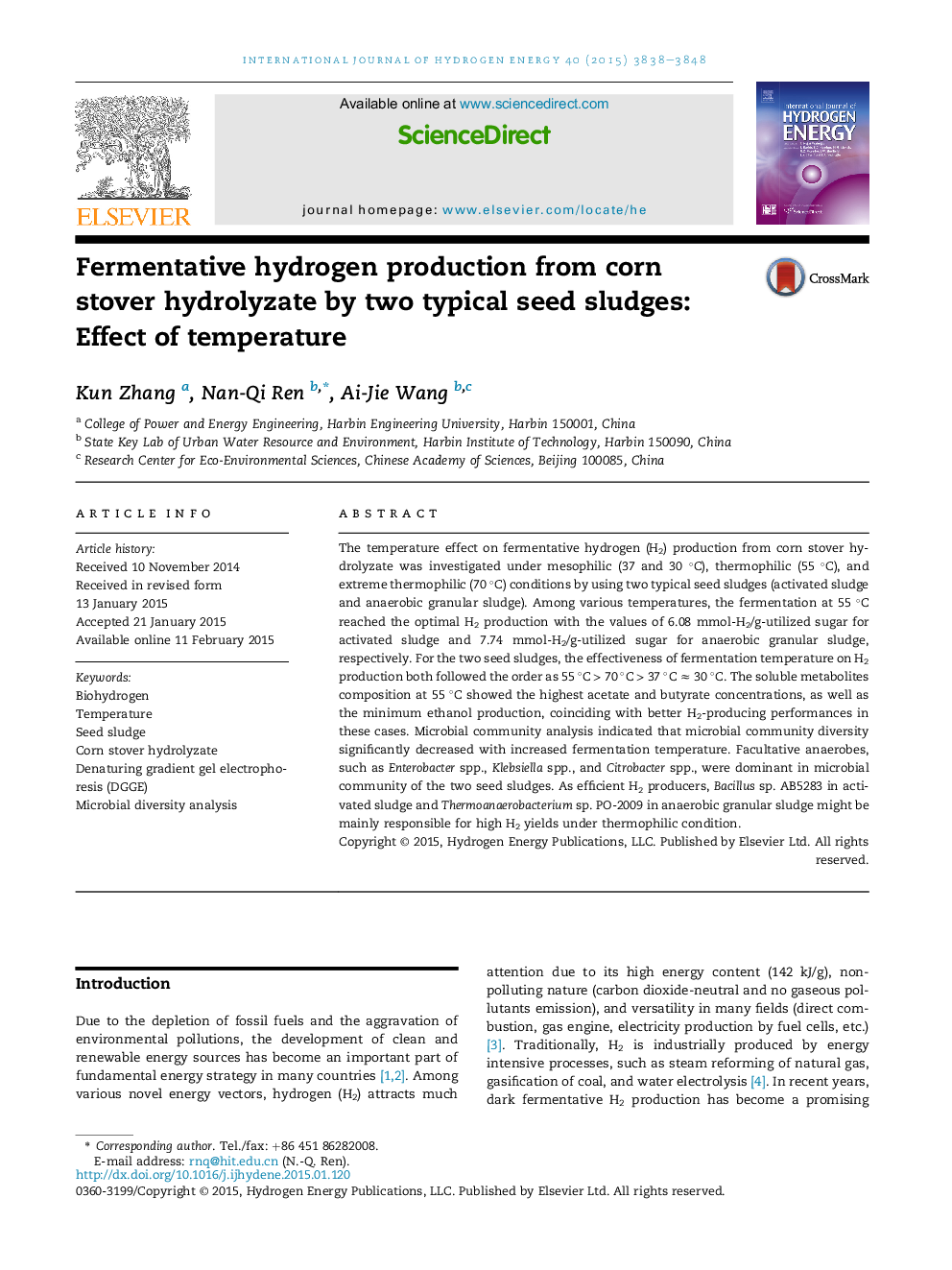| Article ID | Journal | Published Year | Pages | File Type |
|---|---|---|---|---|
| 1275810 | International Journal of Hydrogen Energy | 2015 | 11 Pages |
•The typical activated sludge and anaerobic granular sludge were used as touchstones.•Effect of temperature on H2 production followed the order: 55 °C > 70 °C > 37 °C ≈ 30 °C.•Microbial diversity significantly decreased with increased fermentation temperature.•Facultative anaerobes (Enterobacter spp. etc.) dominated the microbial community.•Bacillus sp. AB5283 and Thermoanaerobacterium sp. PO-2009 were H2 producers at 55 °C.
The temperature effect on fermentative hydrogen (H2) production from corn stover hydrolyzate was investigated under mesophilic (37 and 30 °C), thermophilic (55 °C), and extreme thermophilic (70 °C) conditions by using two typical seed sludges (activated sludge and anaerobic granular sludge). Among various temperatures, the fermentation at 55 °C reached the optimal H2 production with the values of 6.08 mmol-H2/g-utilized sugar for activated sludge and 7.74 mmol-H2/g-utilized sugar for anaerobic granular sludge, respectively. For the two seed sludges, the effectiveness of fermentation temperature on H2 production both followed the order as 55 °C > 70 °C > 37 °C ≈ 30 °C. The soluble metabolites composition at 55 °C showed the highest acetate and butyrate concentrations, as well as the minimum ethanol production, coinciding with better H2-producing performances in these cases. Microbial community analysis indicated that microbial community diversity significantly decreased with increased fermentation temperature. Facultative anaerobes, such as Enterobacter spp., Klebsiella spp., and Citrobacter spp., were dominant in microbial community of the two seed sludges. As efficient H2 producers, Bacillus sp. AB5283 in activated sludge and Thermoanaerobacterium sp. PO-2009 in anaerobic granular sludge might be mainly responsible for high H2 yields under thermophilic condition.
